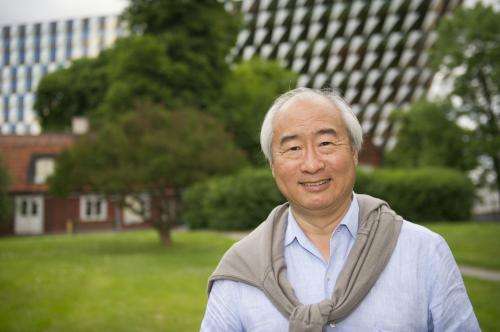Synthetic mRNA can induce self-repair, regeneration of the infarcted heart

A team of scientists at Karolinska Institutet and Harvard University has taken a major step towards treatment for heart attack, by instructing the injured heart in mice to heal by expressing a factor that triggers cardiovascular regeneration driven by native heart stem cells. The study, published in Nature Biotechnology, also shows that there was an effect on driving the formation of a small number of new cardiac muscle cells.
"This is the beginning of using the heart as a factory to produce growth factors for specific families of cardiovascular stem cells, and suggests that it may be possible to generate new heart parts without delivering any new cells to the heart itself ", says Kenneth Chien, a Professor at the medical university Karolinska Institutet in Sweden and Harvard University, US, who led the research team behind the new findings.
The study is based upon another recent discovery in the Chien lab, which was published in Cell Research. This study shows that VEGFA, a known growth factor for vascular endothelial cells in the adult heart, can also serve as a switch that converts heart stem cells away from becoming cardiac muscle and towards the formation of the coronary vessels in the fetal heart. To coax the heart to make the VEGFA, the investigators in the Nature Biotechnology study used new technology where synthetic messenger RNA (mRNA) that encodes VEGFA is injected into the muscle cell. Then, heart muscle produces a short pulse of VEGFA. The mRNA is synthetically modified so that it escapes the normal defense system of the body that is known to reject and degrade the non-modified mRNA as a viral invader.
The study, performed in mice, shows that only a single administration of a short pulse of expression of VEGFA is required, if it can be delivered to the exact region where the heart progenitors reside. The therapeutic effect is long term, as shown by markedly improved survival following myocardial infarction with a single administration of the synthetic mRNA when given within 48 hours after the heart attack. The long-term effect appears to be based on changing the fate of the native heart stem cells from contributing to cardiac fibrotic scar tissue and towards cardiovascular tissue.
"This moves us very close to clinical studies to regenerate cardiovascular tissue with a single chemical agent without the need for injecting any additional cells into the heart." says Professor Chien.
At the same time, he points out that these are still early days and there remains much to be done. In particular, it will become of interest to engineer new device technology to deliver the synthetic mRNA via conventional catheter technology. It also will be critical to move these studies, which are based in mouse models, to other animals, which is currently in progress.
More information: 'Modified mRNA directs the fate of heart progenitor cells and induces vascular regeneration after myocardial infarction', Lior Zangi, Kathy O Lui, Alexander von Gise, Qing Ma, Wataru Ebina, Leon M Ptaszek, Daniela Später, Huansheng Xu, Mohammadsharif Tabebordbar, Rostic Gorbatov, Brena Sena, Matthias Nahrendorf, David M Briscoe, Ronald A Li, Amy J Wagers, Derrick J Rossi, William T Pu & Kenneth R Chien, Nature Biotechnology, online 8 September 2013, DOI: 10.1038/nbt.2682
Journal information: Nature Biotechnology
Provided by Karolinska Institutet


















